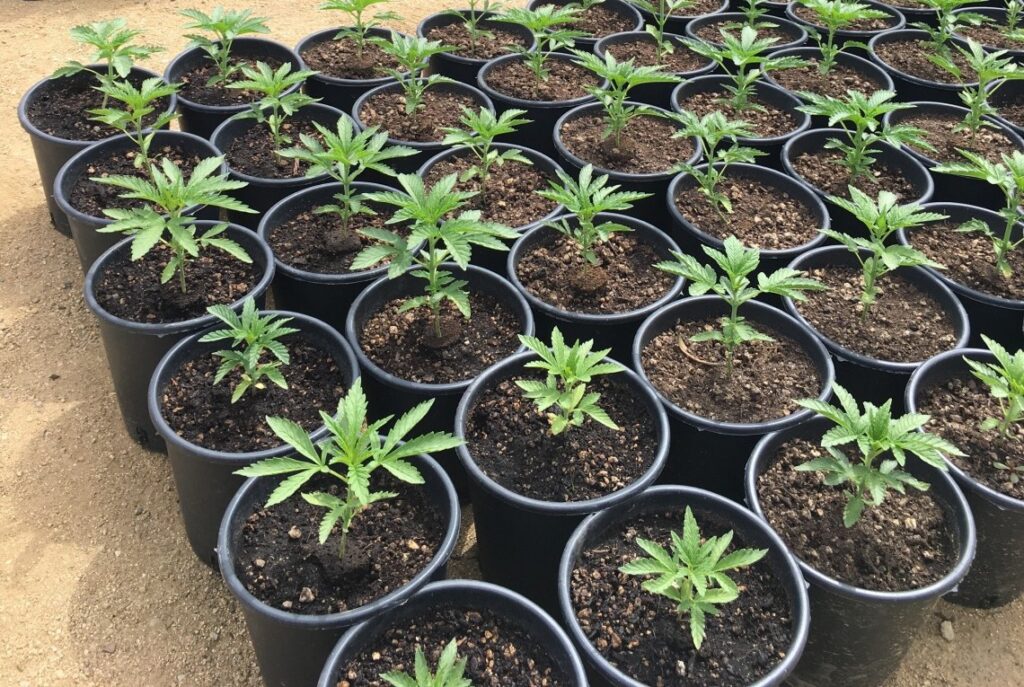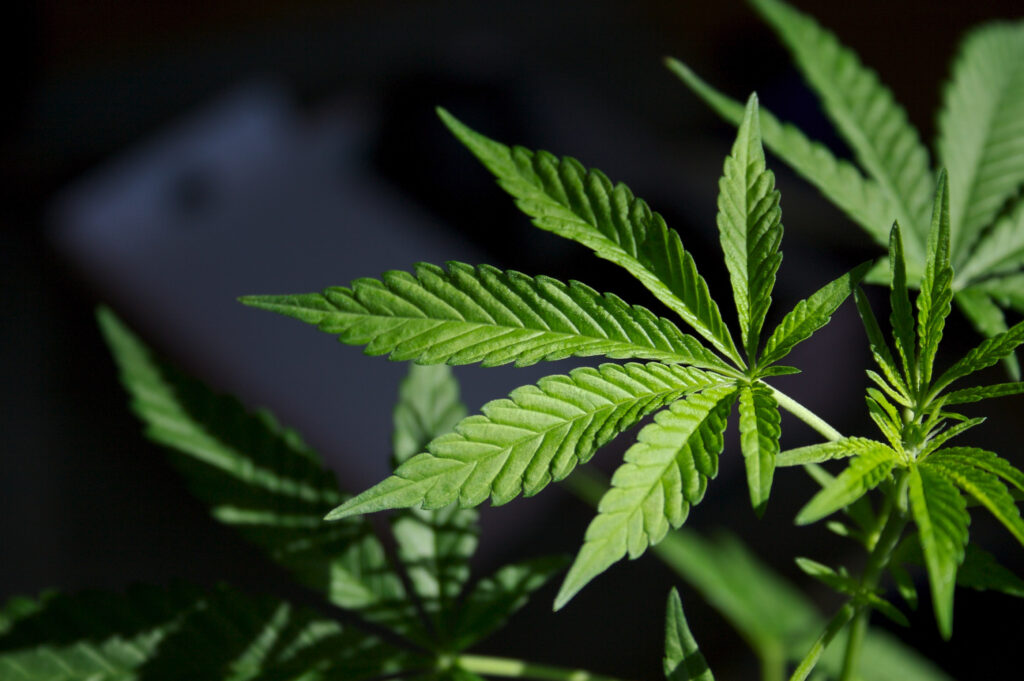Introduction
When it comes to pots, your cannabis wants one thing and one thing only: a safe, healthy place for root development. Without healthy roots, your cannabis will never thrive. Roots are in charge of water retention, nutrient absorption, anchoring the plant, and also facilitate vegetative growth. All of these functions must be considered when choosing a container.
For a root system to develop and thrive, they will need the following:
- Drainage: Water retention is paramount for healthy plants—without it, your cannabis will wither and die. But too much water will waterlog your plant and lead to root rot, killing roots.
- Oxygen: Plant roots require oxygen to function properly. Choose a container that facilitates enough oxygen for root development without overexposing them to the elements—containers do this though various styles of perforation.
- Nutrients: Roots require optimal conditions for nutrient absorption to occur. This includes pH balance, optimal temperatures, and nutrient availability.
- Space: Roots need plenty of space to branch out. A container that is too small will cause it to become rootbound and choke the plant.
Common Pots used for Cannabis growing

Garden centers and grow supply chains offer different pots that vary by material composition, shape, size, and perforation style.
1. Traditional plastic containers
Standard plastic containers are a popular option for growers operating on a budget. These pots are inexpensive, but still provide the essentials for your plants.
Pros:
- Low overhead costs
- Solid drainage (plus it’s easy to add more holes)
- Transplanting is easy and inexpensive
Cons:
- Inability to protect root systems from temperature fluctuations
- Lack of durability which can cause cracks and structural damage over time
- May have airflow issues depending on the grow medium
2. Ceramic pots
Otherwise known as terra cotta, ceramic pots offer a unique set of benefits to growers in hot climates.
Pros:
- Absorb moisture and retain lower temperatures during hotter days
- Heavy weight helps to anchor larger plants
Cons:
- Less than optimal drainage; drilling holes into clay pots is possible but requires special tools and is more labor-intensive
- Heavy weight makes it difficult to transport plants
3. Fabric containers
A relatively new innovation in container gardening, roots in fabric pots grow to the outer edges and attempt to bypass the porous fabric wall. Instead, they are cut back, allowing new growth to occur. This process, called “air pruning,” results in a denser root composition which promotes healthy growth and development.
Pros:
- Promotes dense, healthy root systems
- Increased airflow to the roots
- Excellent drainage ideal for carefully-maintained gardens
Cons:
- Requires more attention and maintenance as the pots dry out quickly. Note: you can use larger pots to help slow drying out.
- Flimsy structure can make plant support challenging
Tips on Choosing Pots for Your Cannabis Plants
Cannabis is becoming legal throughout the United States, whether for medical or recreational purposes. Those in medical states may be able to grow their own marijuana, depending on the specific legislation. If you live far away from a dispensary, then growing can be an excellent option; plus, it’s a rewarding task!
However, the task of growing cannabis can be daunting for novice cultivators. Marijuana can be quite particular about its growing environment, so you need to read up on the proper techniques. It can even be helpful to find growing guides for specific strains!
In this generalized guide, we will explain one of the fundamentals of growing pot: Choosing a pot to grow it in! Here are our top five tips for choosing the right container for your cannabis.
1. Know the Types of Pots You Can Use
One of the first things to know is that there are different kinds of pots used for growing. If you have a green thumb and already garden, you’ll probably have some handy containers lying around just waiting to be put to use.
Here is a brief breakdown of the most common pots used in cannabis growing:
- Plastic Container: A standard plastic pot used in planting. They are inexpensive and provide good drainage, but are not very durable.
- Ceramic Container: Terracotta plant pots are a familiar sight for many gardeners. They’re great for temperature regulation, but not so good for drainage.
- Fabric Containers: Fabric pots have a thick fabric covering; they support soil and plants surprisingly well. Fabric containers have excellent airflow and drainage, but can be flimsier than other containers.
- Air Pots: Similarly to fabric containers, air pots provide incredible airflow via holes throughout the pot. However, they may be expensive and lead to an increase in watering.
Of course, these are not the only pots available. There are other containers you can use, but most growers use the above.
You need to consider things like cost and the size of your grow room, as well as how many plants you are growing. Even with limited space and a reasonably low budget, you can make any of these pots work for you; but you may need to adapt the growing process depending on the qualities of your container.
2. Understand Growing Mediums
Another vital factor in choosing a container is thinking about which growing medium you will be using.
When you first start growing your plants, you’ll need to choose what growing medium you’ll use. No matter what, your plants will require access to water, oxygen, and nutrients. Typically, growers use a soil medium. Plants can acquire water and nutrients from the soil, as well as oxygen depending on how good the airflow of the container is.
Other growers use hydroponics, which means growing in water with an alternative medium such as rock wool or coco coir.
Different containers are better for different growing mediums. Air pots are ideal for hydroponics, for example. As long as your roots are developing healthily, then you’re doing something right!
3. Finding the Right Sized Container
Importantly, you need to make sure that your plants have a container that is the right size. Otherwise, they won’t be able to draw the right amounts of oxygen, water, and nutrients from the soil.
A seedling will only need a very small pot. Some growers even use a solo cup, to begin with! As it grows, you will need to transplant it to larger pots (more on this in the next section).
A good rule of thumb is to use two gallons for every 12” of height. You will need to research the strain you’re growing to find out what containers you will need. Here is a rough guide to the size you will require.
By the way, fabric pots may need to be twice the usual size due to how quickly they dry out.
4. Transplant When Needed
Eventually, your young cannabis plant will outgrow its seedling pot and will need to be transferred (transplanted) into a larger container. When the plant’s leaves reach the edge of the pot, it’s time to move the plant.
A few days before it’s time to transplant, avoid watering your plants. This helps the soil to stick better when removing it.
Here are our top tips for transplanting:
- Before you begin, make sure you wash your hands and wear gloves, so you don’t contaminate the roots – they’re really sensitive.
- Fill the new container with the growing medium and transfer the plant from one pot to another.
- Be careful not to damage the roots, as this could shock the plant and may kill it.
- Avoid intense light, as this may also shock the plant.
- The first transplant is the one most likely to cause shock, so be extra careful!
- Water the soil after transplanting.
- Do not transplant any plant after it has started flowering.
5. Make Sure You Catch Water Run-off!
When growing cannabis, you’re bound to get some water runoff. As the water moves through the soil, it may pool at the bottom unless you have adequate drainage. Most plant pots have holes in the bottom for this purpose – but you don’t want water ending up all over the floor!
Water needs to be collected after every watering, so you need to find a simple and effective water collection system. This might be easier than you think!
All you need is a saucer or a tray. Saucers are ideal for just one or two plants, but you need to remember to empty the water often. Trays are better for lots of plants as they can collect water from multiple pots at once.
Another benefit to trays is that you can use a water transfer pump to effectively move the water out of the tray. This removes a lot of work for you!
Ultimately, whichever tool you choose is dependent on how many plants you are growing at any one time.
Conclusion
Choosing the right container for your cannabis plants is vital, but it doesn’t have to be complicated. In fact, it’s pretty straightforward to find ideal pots for your plants. You need to consider critical factors such as how many plants you’re growing and what your growing area looks like. Different containers work for different cultivators, and so there isn’t any one right answer.
In the main, you need to ensure that the container is the correct size and provides adequate drainage and airflow. Once you have that covered, you should be good to go!
Any questions? Leave them below in the comments, and a member of our team or our community will get back to you with advice.
If you’re embarking on your first cannabis-growing adventure, you might be wondering which pots are best for your plants. Here’s our complete guide.

